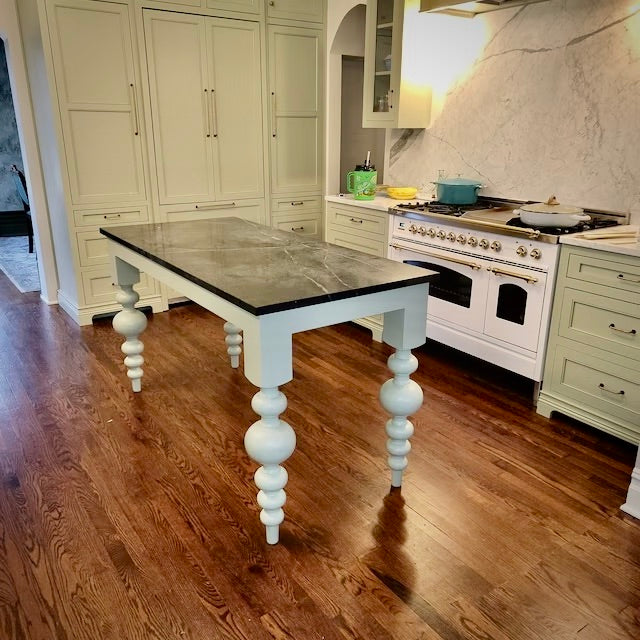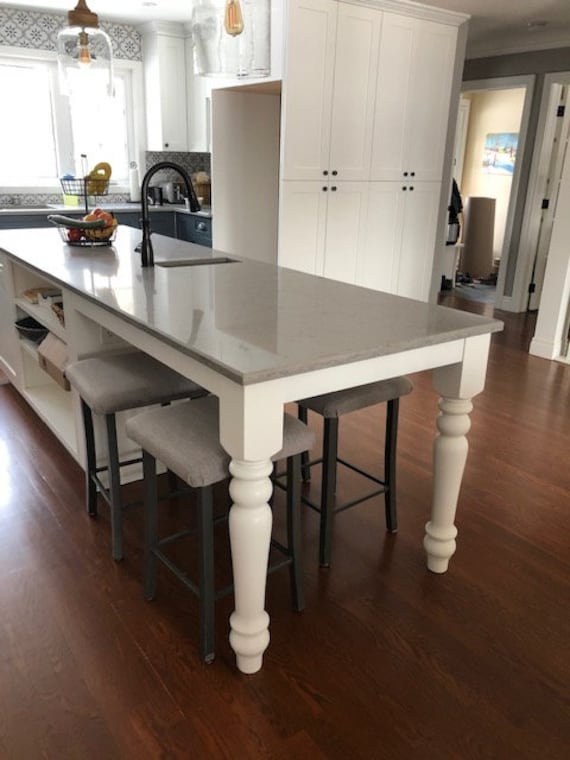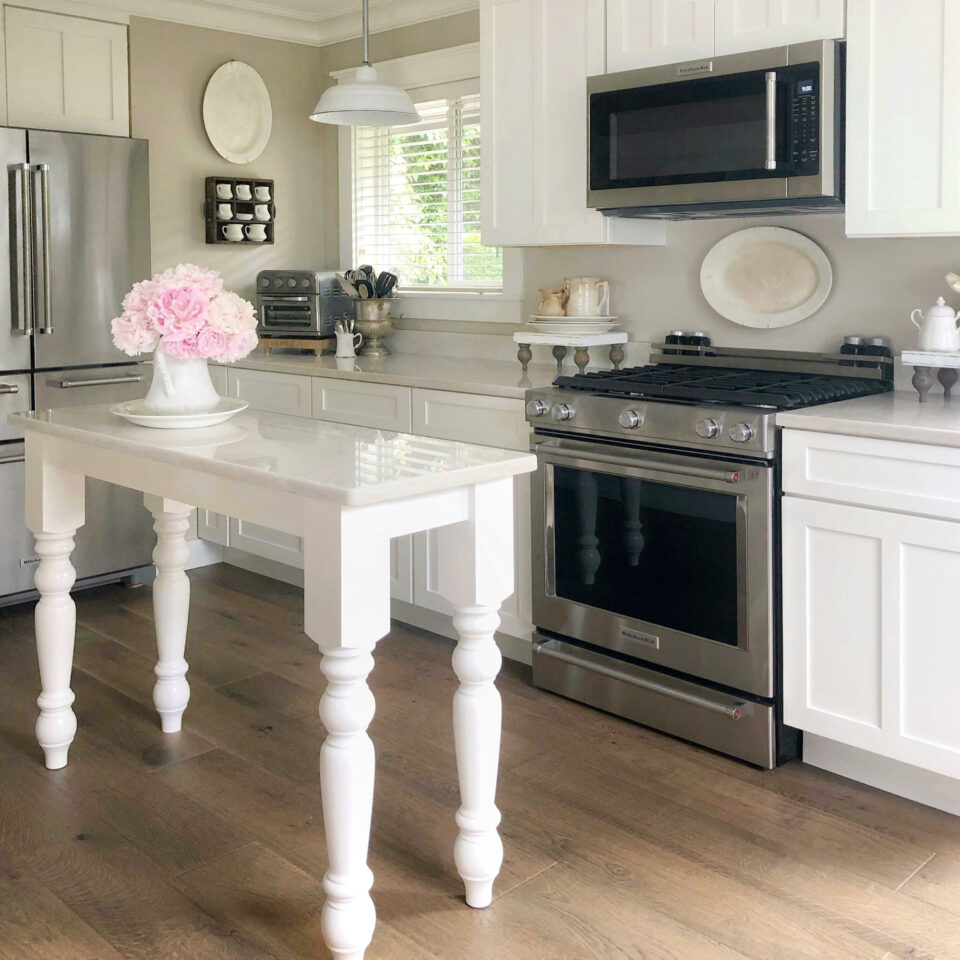Kitchen Island Legs: Include Performance and Design to Your Area
Kitchen Island Legs: Include Performance and Design to Your Area
Blog Article
Important Tips for Picking the Perfect Table for Your Kitchen
Picking the best table for your kitchen area is more than just a matter of preference; it demands a detailed understanding of your space and requirements. Begin by determining your readily available area to make sure ample clearance for movement. The shape of the table plays an essential duty; while rectangular tables fit larger areas, rounded ones foster intimacy, and extendable alternatives offer versatility. Material option is similarly important, with woods offering sturdiness and glass financing a modern touch. Lastly, the table should integrate with your cooking area's aesthetics and suit your family members conveniently. What other factors might influence this essential decision?
Action Your Area
Choosing the suitable dining table starts with a careful analysis of your readily available space. This fundamental step ensures that the table not only fits easily within the area but also complements the general format and functionality of your dining area. Begin by gauging the dimensions of the space, taking into consideration entrances, home windows, and any type of existing furniture. This will assist you establish the maximum permitted size for your dining table.
Think about the flow of activity around the table. It is important to leave sufficient area for chairs to be pulled out and for people to walk around the table without blockage. A basic general rule is to permit a minimum of 36 inches of clearance from the edge of the table to the closest wall surface or furniture piece. This makes sure ease of accessibility and convenience throughout dishes.
Furthermore, believe concerning the variety of people you generally entertain and whether you need added room for visitors. Going with an extendable table can offer flexibility, enabling you to suit varying numbers of restaurants. By accurately determining your space, you prepared for choosing an eating table that boosts both the aesthetic appeals and functionality of your eating location.
Choose the Right Shape

On the various other hand, round tables are outstanding for smaller kitchens or intimate celebrations, as they promote discussion by allowing every person to deal with each other. They likewise offer a sense of comfort and can fit well in tighter spaces due to their lack of sharp edges. Oblong tables offer the very best of both worlds, integrating the length of rectangular tables with the affection of rounded ones, making them versatile for different settings.
Square tables are another option, especially fit for square-shaped rooms. They produce a contemporary and symmetrical look, cultivating an equivalent dining experience for all seated.
Product Considerations
When choosing a dining table, product factors to consider are vital in identifying the table's durability, upkeep demands, and total visual. Wood is a classic option, offering ageless charm and toughness. Woods like walnut, mahogany, and oak are specifically durable, though they can be expensive. kitchen island legs. Softwoods, such as pine, are more inexpensive but might be vulnerable to scrapes and damages.
Glass-topped tables supply a modern, smooth look and can make a space show up larger as a result of their transparency. They need constant cleaning to stop finger prints and smudges. Additionally, solidified glass is advised for its added stamina and safety and security.

Last but not least, composite materials like MDF (Medium-Density Fiberboard) or plywood are economical options. These materials can simulate the appearance of strong wood but might not offer the very same durability. They are generally much easier to clean yet can be vulnerable to water damages if not properly sealed.
Ultimately, the option of product need to line up with your cooking area's style, your way of living needs, and your spending plan constraints. (kitchen island legs)
Seats Capacity and Convenience
Just how do you figure out the best seating capability and convenience for your eating table? For a family of 4, a rectangular table of 48 inches long or a round table with a 48-inch diameter is normally enough.
Convenience is equally vital. The elevation of the table must preferably be around 30 inches, giving a well balanced ergonomic position for seated restaurants. Chairs should have a seat height of 18 to 20 inches to guarantee a comfortable dining position. Furthermore, think about the chair style; helpful backrests and upholstered seats can enhance eating comfort dramatically, particularly throughout extended dishes.
Style and Aesthetics
Selecting a table that matches your style and visual appeal involves stabilizing individual taste with the existing decoration of your eating space. The table is frequently the centerpiece of the kitchen area, and its style ought to enhance her latest blog the overall theme of the area. Whether your kitchen area boasts a contemporary, minimalist appearance or a rustic, farmhouse beauty, the table you select need to harmonize with these components to develop a natural and inviting ambience.
Take into consideration materials thoroughly; wood offers a timeless charm and can vary from abundant mahogany for a standard aim to lighter oak for a contemporary feel. Steel and glass tables, on the other hand, can introduce a sleek, industrial edge to your cooking area. Do not ignore the table's shape-- rectangular tables are versatile and traditional, while round and oval choices can foster an extra intimate eating experience.
Additionally, pay close attention to coatings and information. A distressed finish may add personality and heat, whereas a shiny surface area can add to a clean, modern-day aesthetic. Eventually, your eating table should not just in shape flawlessly into your kitchen's style but likewise mirror your individual design, boosting the space both functionally and aesthetically.
Final Thought
To conclude, picking the ideal table for a cooking area necessitates mindful examination of space, shape, product, seating capacity, and visual harmony. Ensuring a minimum clearance of 36 inches promotes comfy motion, while the option of form improves spatial dynamics. Product choice influences sturdiness and layout, making it critical to straighten with the cooking area's overall aesthetic. Inevitably, a well-chosen table fosters an inviting ambience and accommodates the household comfortably, hence improving the dining experience.

When picking an eating table, product factors to consider are critical in figuring out the table's toughness, maintenance needs, and total visual. For a family of four, a rectangular Discover More table of 48 inches long or a round table with a 48-inch diameter is generally enough.
Don't overlook the table's form-- rectangular tables are timeless and functional, while round and oval options can promote a much more intimate eating experience. kitchen island legs.
Report this page